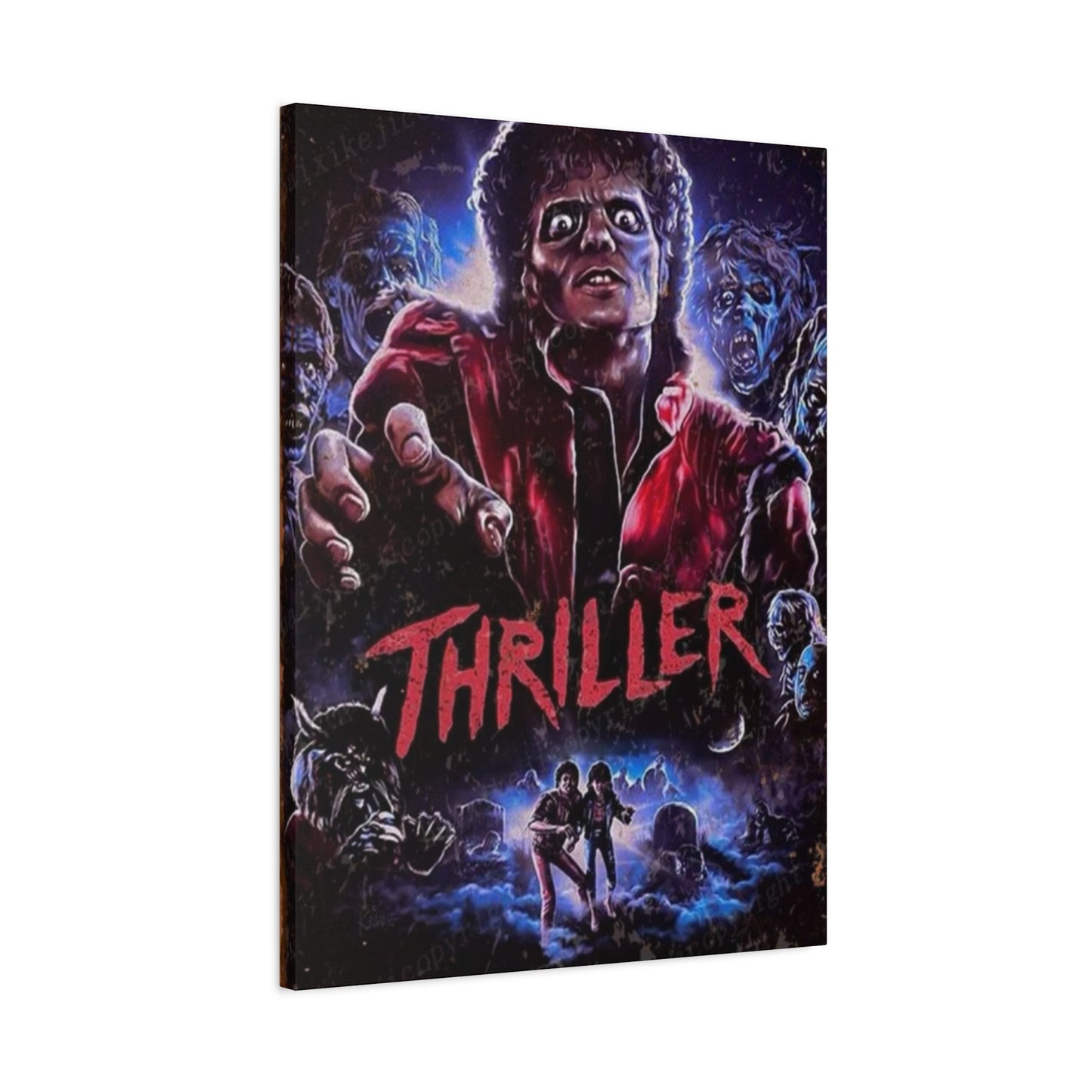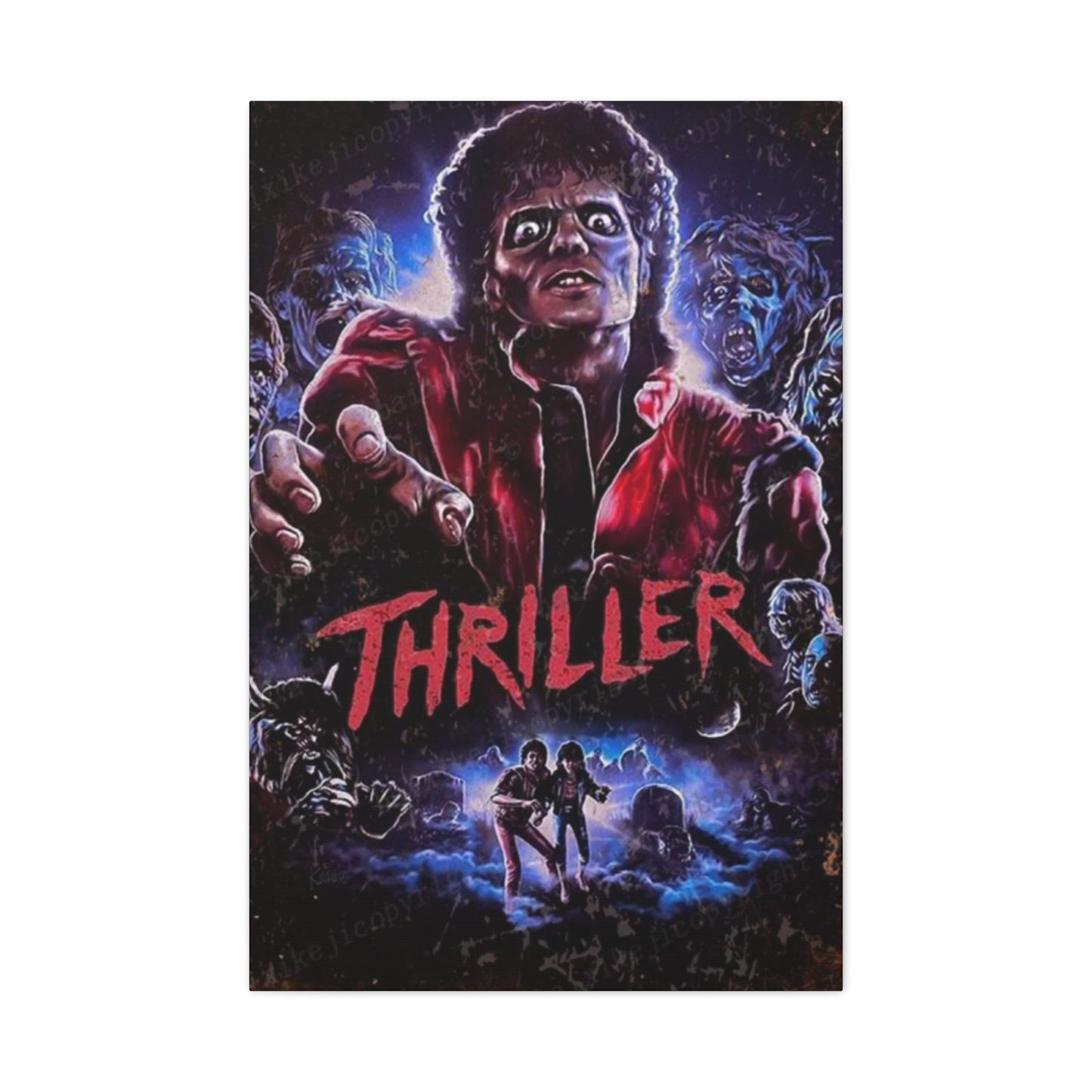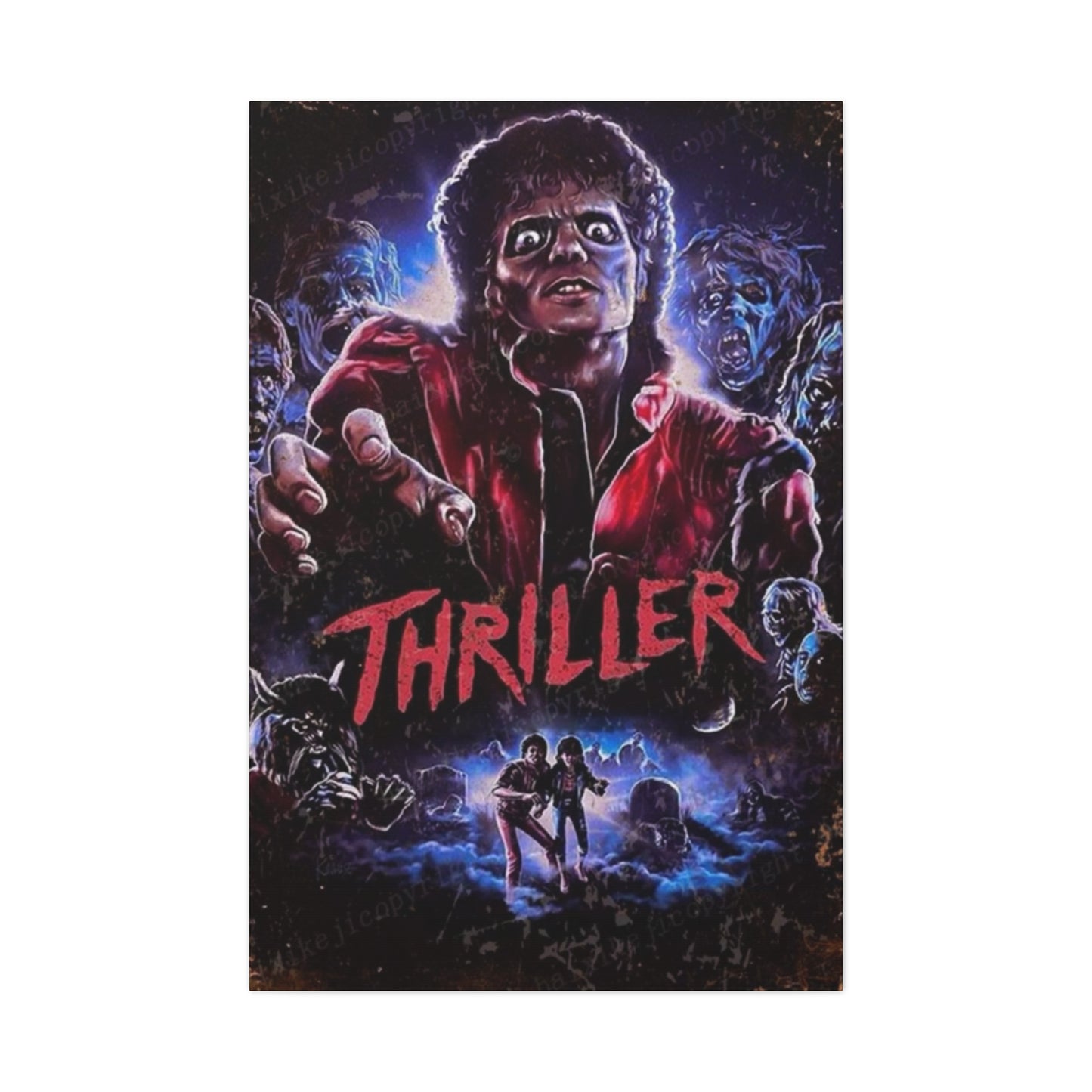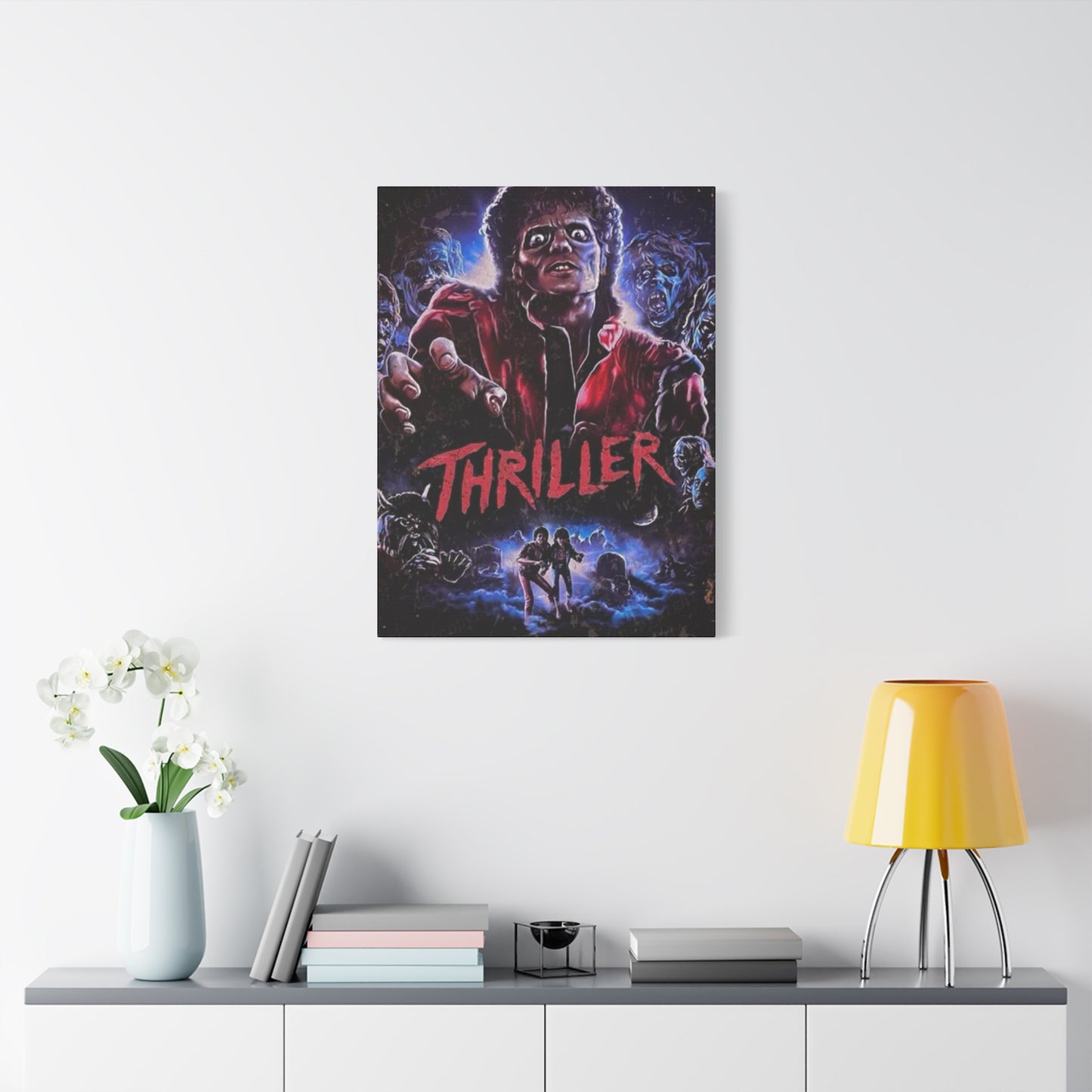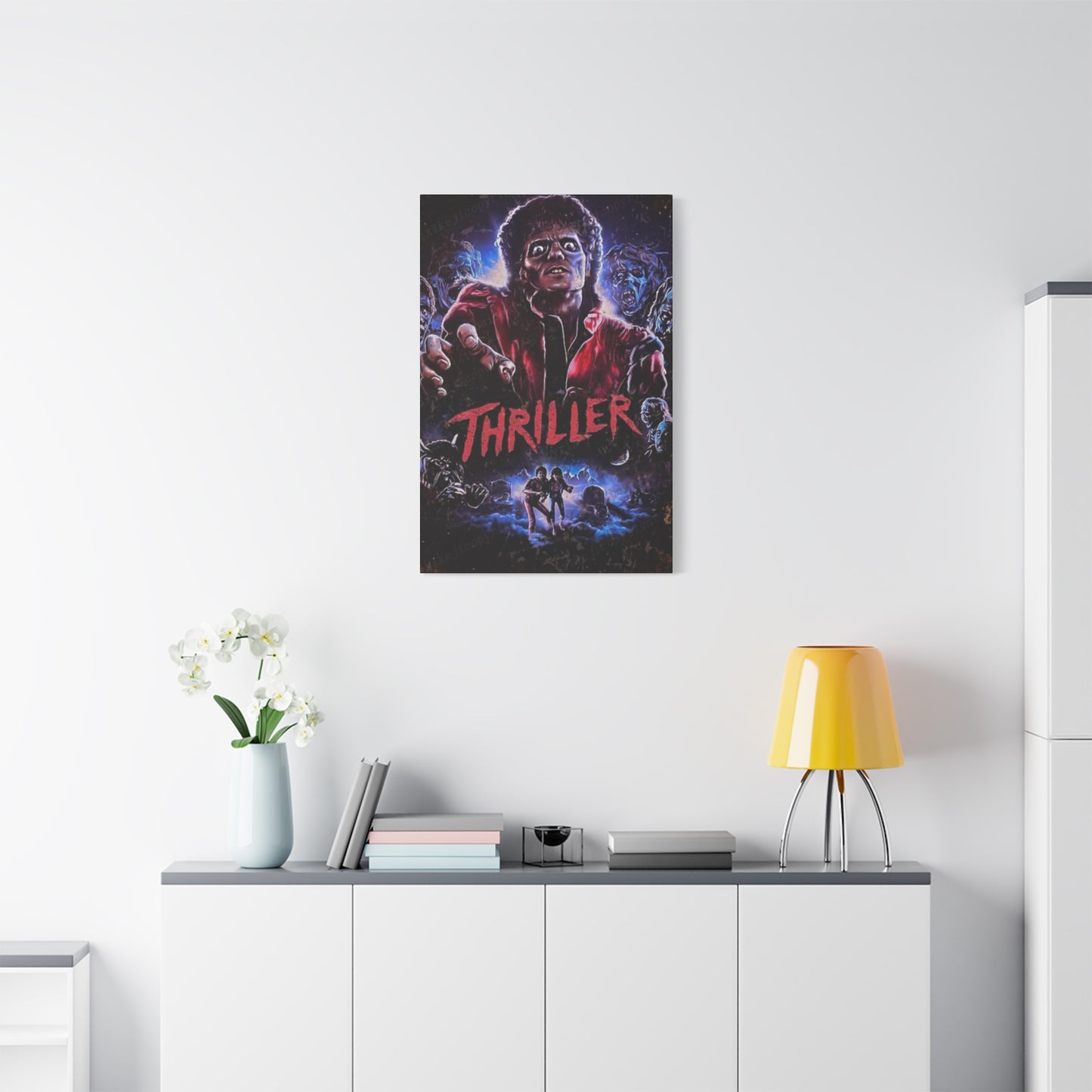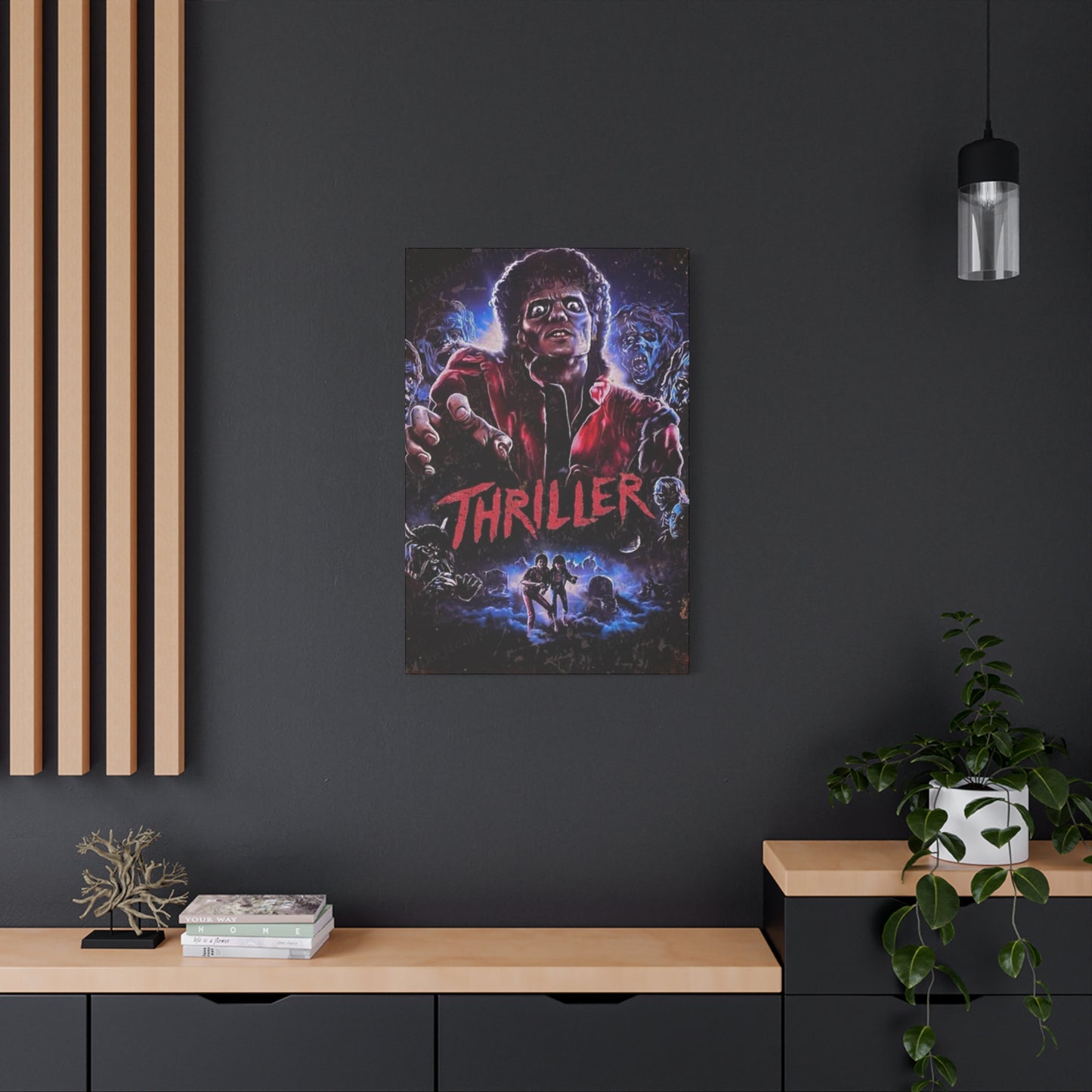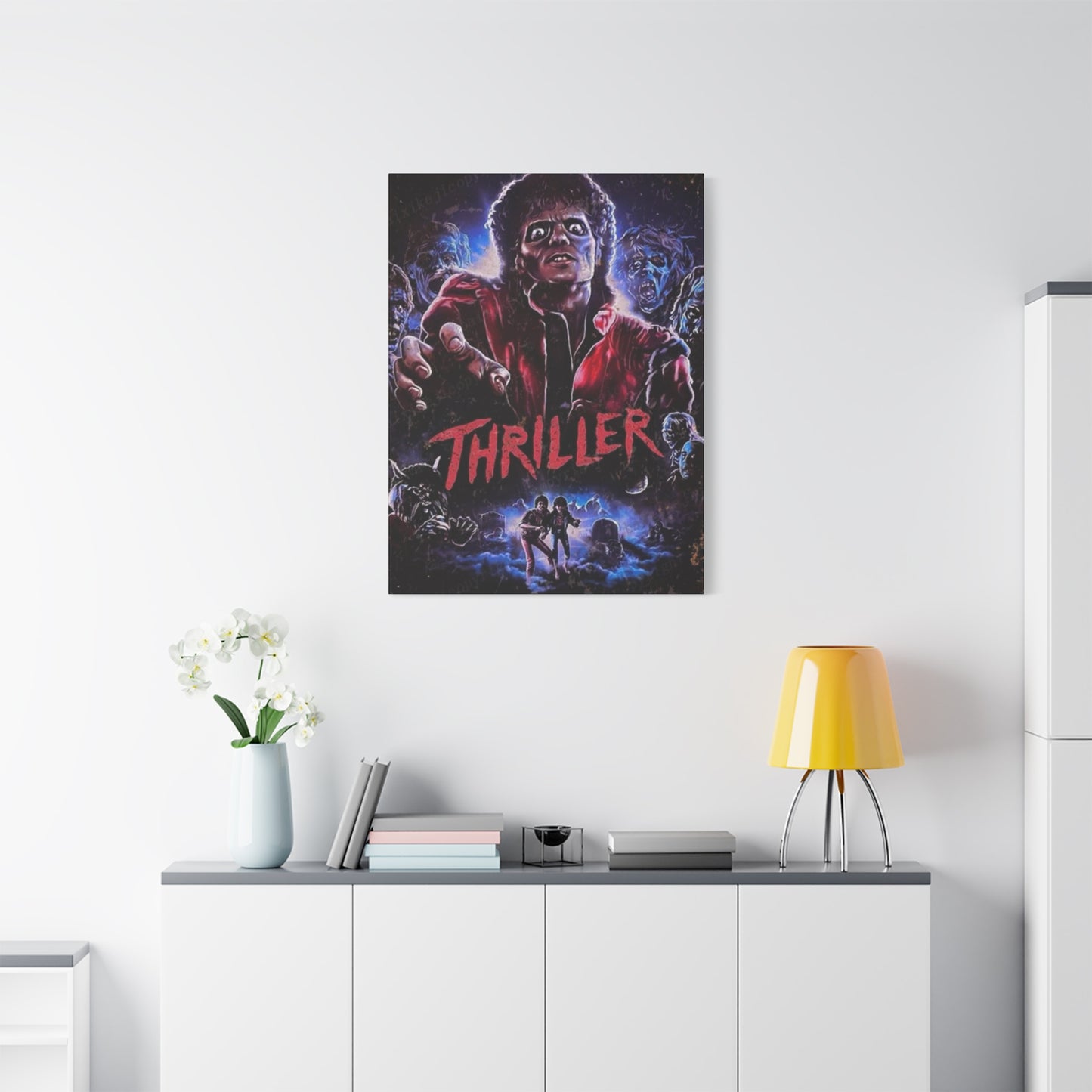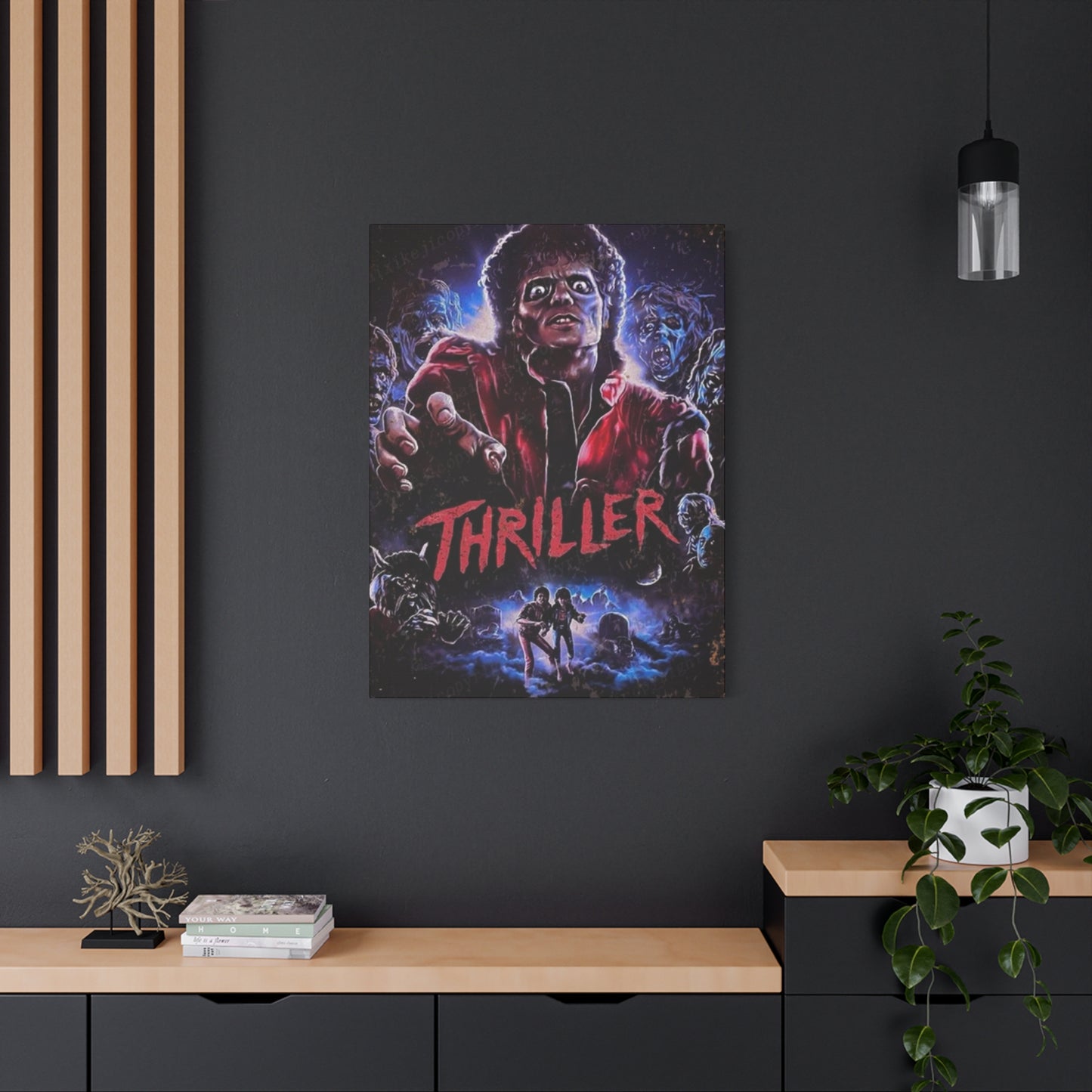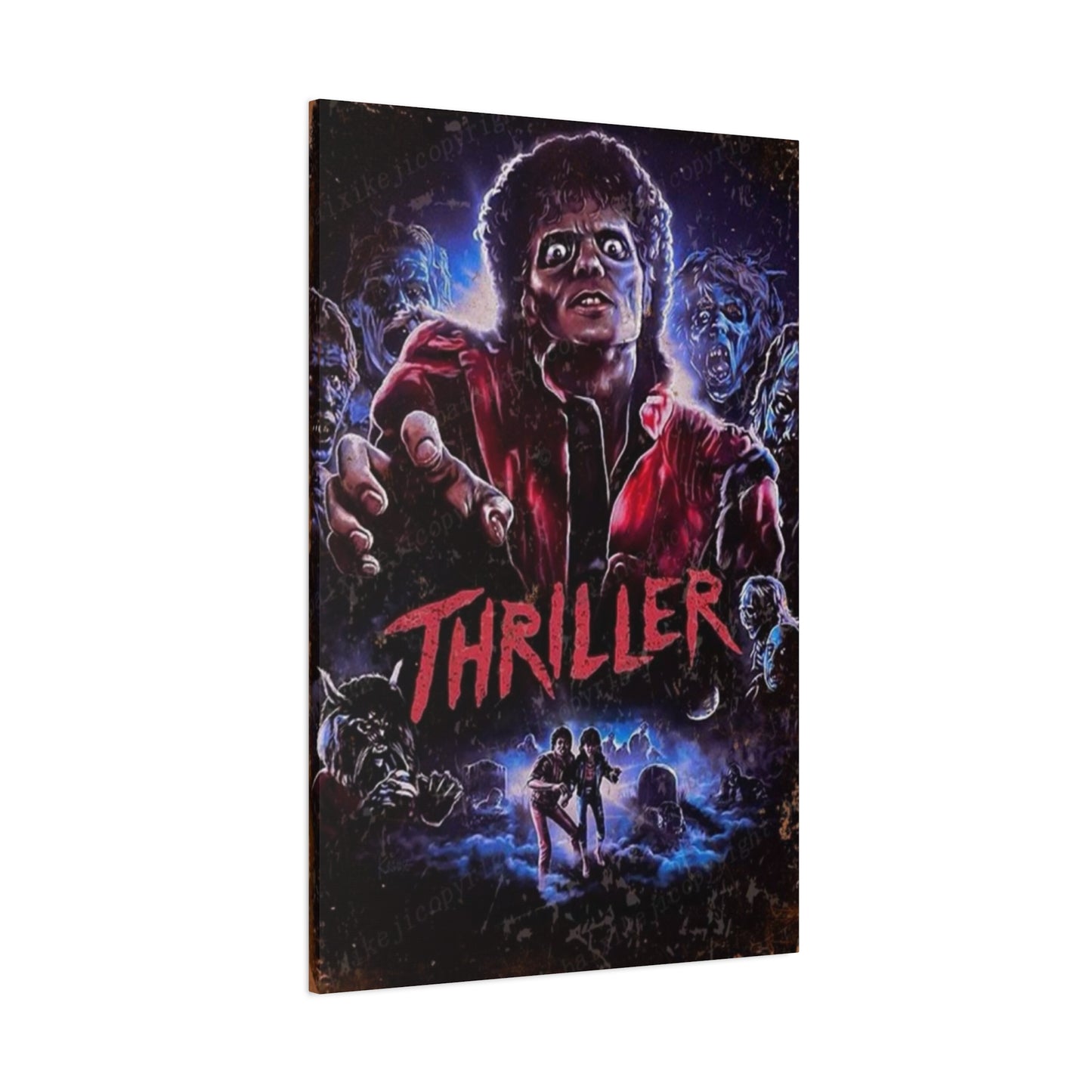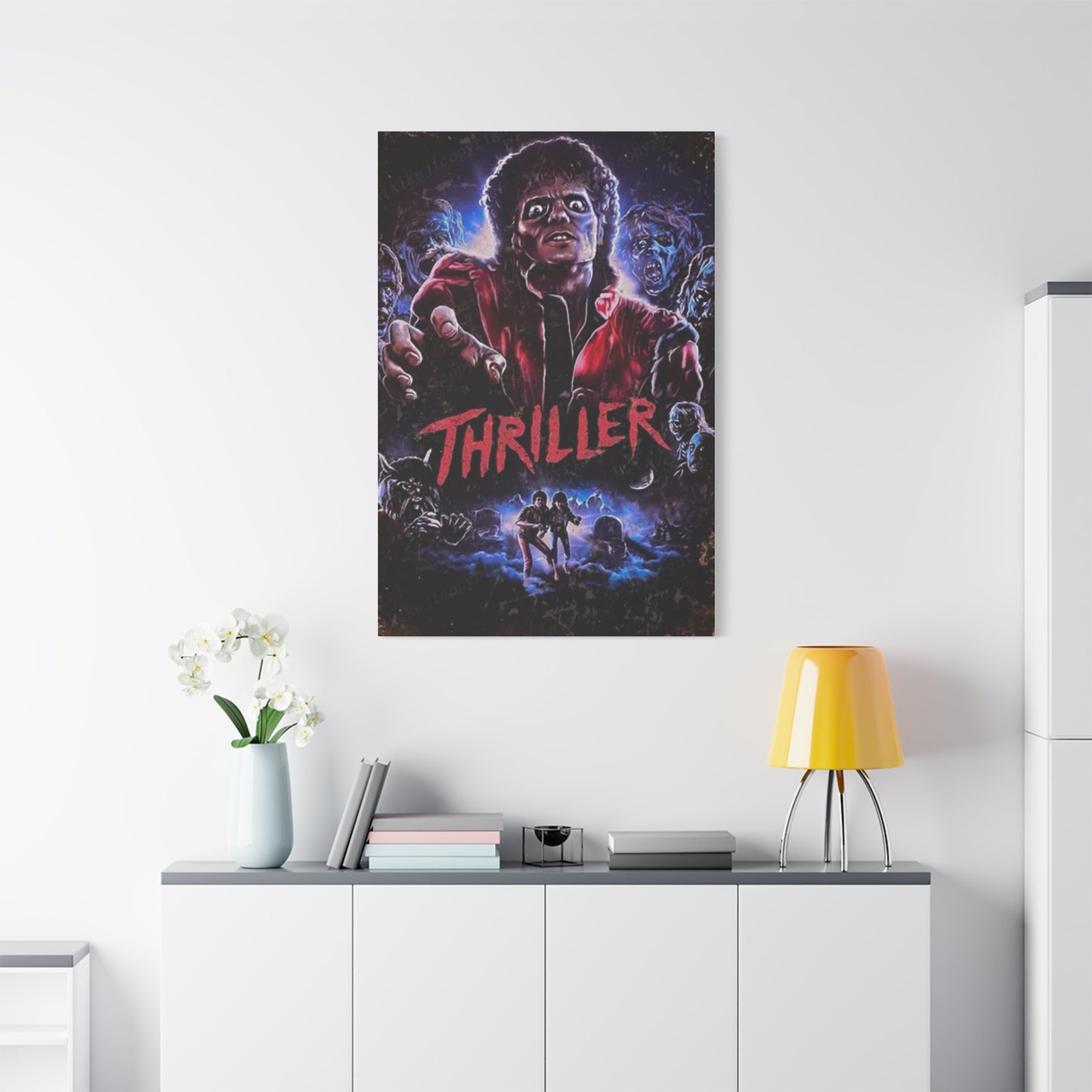Decorating Your Space with Thriller Horror Movie Poster Wall Art: A Comprehensive Exploration
The world of cinema has given us countless memorable moments, but few genres capture the imagination quite like thriller horror films. These movies have not only terrified audiences for decades but have also produced some of the most iconic visual imagery in entertainment history. Today, enthusiasts and collectors are increasingly turning to thriller horror movie poster wall art as a way to celebrate their favorite films while adding a distinctive aesthetic to their living spaces.
The appeal of displaying thriller horror movie poster wall art extends far beyond simple decoration. These pieces represent a connection to the films that have shaped our cultural landscape, evoked powerful emotions, and pushed the boundaries of storytelling. Whether you're a longtime horror aficionado or someone who appreciates the artistic merit of vintage cinema advertising, incorporating these posters into your home decor offers a unique opportunity to express your personality and interests.
This comprehensive exploration will delve into every aspect of thriller horror movie poster wall art, from understanding their historical significance to learning how to select, display, and preserve these captivating pieces. We'll examine the various styles, themes, and artistic movements that have influenced horror movie posters throughout the decades, and provide practical guidance on building a collection that reflects your personal taste while enhancing your living environment.
The Historical Evolution of Horror Cinema Posters
The journey of horror movie advertising art begins in the silent film era, when cinemas needed eye-catching visuals to attract audiences to theaters. During this formative period, poster designers relied heavily on dramatic imagery and bold typography to convey the frightening nature of the films being promoted. These early examples of thriller horror movie poster wall art were often hand-painted or lithographed, making each piece a unique work of art in its own right.
As the industry evolved through the 1930s and 1940s, the golden age of Universal Monsters brought forth iconic imagery that continues to influence design today. Posters for films featuring Dracula, Frankenstein's monster, and the Wolf Man established visual conventions that would define the genre for generations. The artists of this era understood the importance of creating compositions that were simultaneously terrifying and alluring, drawing potential viewers into theaters while promising an unforgettable experience.
The 1950s witnessed a shift in horror cinema aesthetics, influenced by Cold War anxieties and the emergence of science fiction themes. Posters from this decade often featured bold colors, particularly reds and greens, and emphasized the spectacular or grotesque elements of the films. The artwork became more stylized and sensational, with monster designs that reflected contemporary fears about nuclear radiation, alien invasion, and technological advancement gone wrong.
Moving into the 1960s and 1970s, horror cinema underwent significant transformation, and poster art evolved accordingly. This period saw the rise of psychological horror, slasher films, and exploitation cinema, each bringing distinct visual approaches to movie advertising. Designers began experimenting with photography, photomontage, and increasingly sophisticated printing techniques. The thriller horror movie poster wall art from this era often featured stark, unsettling imagery that reflected the more mature and disturbing content of the films themselves.
The 1980s represented a renaissance for horror cinema and its promotional materials. Home video technology meant that movie posters took on new significance as VHS cover art, while theatrical releases featured increasingly elaborate and artistic poster designs. This decade produced some of the most recognizable and collectible horror movie posters ever created, with artists pushing boundaries in terms of both technical execution and creative vision.
Contemporary horror poster design draws upon this rich history while incorporating modern design sensibilities and digital production techniques. Today's thriller horror movie poster wall art ranges from minimalist interpretations that emphasize atmosphere and suggestion to elaborate illustrated compositions that pay homage to classic exploitation cinema aesthetics. The diversity of approaches available means that collectors have unprecedented choice when selecting pieces for their spaces.
Artistic Styles and Design Movements in Horror Posters
Understanding the various artistic styles that have influenced horror movie posters helps collectors make informed decisions when selecting thriller horror movie poster wall art for their collections. Each style carries its own aesthetic qualities and cultural associations, contributing different moods and visual impact to a space.
The illustrated tradition represents one of the most enduring approaches to horror poster design. These hand-painted or drawn compositions often feature dramatic scenes from the films, rendered with attention to detail and artistic interpretation. Illustrative posters from the classic era through the 1980s are particularly prized by collectors for their craftsmanship and the tangible sense of artistic labor evident in their creation. These pieces work exceptionally well in spaces that appreciate traditional artistic techniques and vintage aesthetics.
Photographic posters emerged as photography became more sophisticated and affordable for commercial applications. This approach often creates a sense of realism and immediacy that illustrated posters cannot match. Black and white photography, in particular, has been used to striking effect in horror movie promotion, creating stark contrasts and emphasizing shadows and texture. Color photography brought different possibilities, allowing designers to use lighting and composition to create unsettling or atmospheric images that draw viewers into the world of the film.
Minimalist design has become increasingly popular in contemporary horror poster creation, particularly among independent artists and boutique poster companies. These designs strip away unnecessary elements, focusing on simple but powerful imagery, bold typography, or clever symbolic representations of the films. Minimalist thriller horror movie poster wall art works particularly well in modern interiors where clean lines and restrained decoration are valued. The simplicity of these designs allows them to make strong statements without overwhelming a space.
The exploitation cinema aesthetic represents a particular subset of horror poster design characterized by sensational imagery, bold colors, and provocative compositions. These posters were designed to be attention-grabbing at any cost, often featuring lurid details and promises that the films themselves might not fully deliver. While sometimes dismissed as crude or tasteless, the best examples of exploitation poster art demonstrate a raw energy and directness that more refined designs lack. For collectors who appreciate bold, unapologetic aesthetics, these pieces offer tremendous visual impact.
Surrealist influences have periodically appeared in horror poster design, particularly for films that deal with dreams, altered consciousness, or psychological horror. These posters employ unexpected juxtapositions, distorted perspectives, and dreamlike imagery to create a sense of unease and disorientation. The surrealist approach to thriller horror movie poster wall art appeals to those who appreciate art that challenges perception and invites contemplation.
Typography-focused designs represent another important category, where the treatment of text becomes the primary visual element. These posters use letterforms, layout, and text arrangement to create mood and communicate the essence of the film. Some of the most effective horror movie posters have succeeded through clever typographic solutions that suggest horror through the manipulation of language and letters themselves. This approach works particularly well for films with memorable titles or taglines.
Cultural Impact and Iconic Imagery
Certain thriller horror movie poster wall art pieces have transcended their original commercial purpose to become cultural icons recognized far beyond the horror community. These posters have influenced fashion, contemporary art, and design, appearing in contexts far removed from their original theatrical promotion purpose. Understanding what makes these particular images so powerful helps explain the enduring appeal of horror poster art.
The visual language established by early horror posters created conventions that filmmakers and designers continue to reference and reinterpret. Particular imagery has become so associated with the horror genre that it functions as shorthand for fear and suspense. Shadows, partially obscured faces, isolated buildings, vulnerable protagonists, and menacing figures have all become part of a shared visual vocabulary that audiences instantly recognize and respond to emotionally.
Many iconic horror posters work because they tap into universal fears and anxieties that resonate across cultural boundaries. The fear of the unknown, of being pursued, of losing control, or of confronting something inhuman are experiences that transcend specific cultural contexts. The most effective thriller horror movie poster wall art channels these primal concerns through carefully composed imagery that speaks to viewers on a visceral level.
The relationship between horror cinema and social commentary has also contributed to the cultural significance of certain posters. Throughout history, horror films have often reflected contemporary anxieties about social change, political instability, technological advancement, and cultural transformation. The posters promoting these films sometimes capture these concerns in their imagery, making them valuable as cultural documents as well as entertainment memorabilia. Collectors interested in the intersection of pop culture and social history often seek out posters that exemplify this dimension of the genre.
Horror movie posters have also played a role in the development of fan culture and community. Before the internet age, posters were one of the primary ways fans could display their affiliation with the genre and connect with others who shared their interests. Displaying thriller horror movie poster wall art in one's home served as a signal to visitors about one's tastes and interests, potentially sparking conversations and connections. This social dimension of poster collecting continues today, with enthusiasts sharing their collections online and attending conventions where rare posters are bought, sold, and appreciated.
The appropriation of horror imagery by fine artists has further elevated the cultural status of horror movie posters. Contemporary artists have created works that reference, remix, and reimagine classic horror poster imagery, positioning these commercial artifacts within the broader context of art history. This legitimization has contributed to increased interest in original posters as collectible art objects worthy of serious attention and investment.
Building Your Collection of Horror Poster Art
Starting a collection of thriller horror movie poster wall art can seem daunting, but approaching it systematically makes the process more manageable and enjoyable. The first step involves determining what draws you to horror posters in the first place. Are you attracted to particular decades or visual styles? Do you focus on specific franchises, directors, or subgenres? Understanding your motivations helps focus your collecting efforts and prevents the overwhelm that can come from trying to acquire too many different types of pieces.
Budget considerations play a crucial role in any collecting endeavor. Original theatrical posters from significant films can command substantial prices, particularly for pieces in excellent condition. However, the market for horror poster art is diverse enough to accommodate collectors at every price point. Reproduction posters, limited edition prints by contemporary artists, and posters from lesser-known films all offer affordable entry points into collecting. Many collectors build impressive displays by mixing reproduction pieces with occasional splurges on original materials.
Researching the market helps collectors understand pricing, identify reputable sellers, and recognize authentic materials. The horror poster collecting community includes numerous online resources, from dedicated forums to social media groups where enthusiasts share information and advice. Attending conventions, visiting specialty shops, and connecting with other collectors provides valuable education about the market and helps develop the expertise needed to make informed purchasing decisions.
Condition assessment represents a critical skill for serious collectors. Original posters, particularly those from earlier decades, often show signs of wear including tears, creases, fading, and staining. Understanding how these condition issues affect value helps collectors make appropriate decisions about which pieces to acquire and how much to pay. Some collectors prefer pieces in pristine condition, while others appreciate the character that comes with age and previous use. Neither approach is inherently superior, but being clear about your own preferences guides purchasing decisions.
Authenticity verification becomes increasingly important as collections grow in value. Reproductions and forgeries exist in the market, and distinguishing originals from later printings requires knowledge of printing techniques, paper types, sizing conventions, and other technical details. Reputable dealers provide certificates of authenticity and stand behind their materials, making it advisable to establish relationships with trusted sources rather than relying exclusively on anonymous online auctions.
The decision between original materials and reproduction prints depends on individual priorities and circumstances. Original theatrical posters carry historical significance and generally appreciate in value more reliably than reproductions. However, high-quality reproduction thriller horror movie poster wall art allows enthusiasts to display iconic imagery without the expense or conservation concerns associated with vintage materials. Many collectors maintain collections that include both types, using reproductions for frequently displayed pieces while preserving valuable originals in proper storage.
Specific Subgenres and Their Visual Characteristics
The diversity within horror cinema has produced distinct subgenres, each with characteristic visual approaches that manifest in their promotional materials. Understanding these variations helps collectors identify pieces that align with their specific interests and create more focused, coherent displays of thriller horror movie poster wall art.
Slasher films, which rose to prominence in the late 1970s and dominated horror cinema through the 1980s, developed a recognizable poster aesthetic. These designs typically feature masked or shadowed killers, weapons (particularly knives), and vulnerable protagonists, often young women. The compositions frequently employ diagonal lines suggesting violence and chaos, with bold colors, particularly reds, dominating the palette. Taglines emphasize body counts and the inescapable nature of the threats. Collectors drawn to this subgenre often appreciate the direct, visceral quality of these posters and their encapsulation of 1980s design sensibilities.
Gothic horror, with roots extending back to the earliest days of cinema, favors imagery associated with classic literature and Victorian sensibilities. Posters in this tradition feature castles, fog-shrouded landscapes, romantic but dangerous figures, and references to literature and history. The color palettes tend toward deep purples, reds, and blacks, with gothic typography enhancing the period atmosphere. These thriller horror movie poster wall art pieces appeal to collectors who appreciate the intersection of horror with historical aesthetics and literary tradition.
Psychological horror and suspense thrillers often employ more subtle, atmospheric poster designs that emphasize mood over explicit gore or monsters. These posters might feature isolated figures, abstract representations of mental states, or carefully composed scenes that suggest rather than show. The emphasis is on creating unease through composition, color, and symbolic imagery rather than shocking the viewer with graphic content. Collectors who appreciate this approach often favor understated, sophisticated designs that reward close attention.
Supernatural horror encompasses ghosts, demons, and otherworldly entities, resulting in posters that often employ religious imagery, occult symbolism, and representations of the boundary between life and death. These designs frequently use darkness and shadow to suggest invisible forces and unknown threats. Negative space plays an important role, representing the unseen realms from which supernatural threats emerge. The imagery often draws on cultural fears and beliefs about death, the afterlife, and evil forces beyond human comprehension.
Creature features and monster movies have produced some of the most iconic thriller horror movie poster wall art in cinema history. These posters prominently feature the monsters themselves, often depicted at exaggerated scale to emphasize their threat. The designs typically show the creatures in action, threatening humans or destroying property. The challenge for designers is making the monsters appear both believable and frightening, requiring careful attention to details and composition. Collectors often prize these posters for their dynamic compositions and the craftsmanship involved in creating convincing monster imagery.
Zombie and infection horror represents a subgenre with distinct visual conventions in its promotional materials. Early zombie film posters often emphasized exotic locations and voodoo-related imagery, while modern entries in the category focus on decay, crowds of undead, and post-apocalyptic environments. The progression of zombie cinema from its origins to contemporary fast-zombie films is clearly traceable through the evolution of poster art, making this category particularly interesting for collectors interested in tracking genre development.
Body horror, concerned with the transgression and transformation of the physical form, requires poster designers to suggest disturbing content while remaining suitable for public display. These posters often employ abstraction, partial revelation, and suggestive imagery to convey the nature of the films. The most effective examples create visceral responses through carefully calculated compositions that imply rather than explicitly show the body horror within the films.
Creating Themed Displays and Curatorial Approaches
Organizing thriller horror movie poster wall art according to specific themes creates visual coherence and tells stories through the selection and arrangement of pieces. This curatorial approach transforms a simple collection into a thoughtfully presented exhibition that engages viewers and reflects the collector's knowledge and taste.
Chronological arrangements allow collectors to trace the evolution of horror cinema and poster design across decades. This approach works particularly well for those interested in film history and the relationship between cultural moments and horror's themes and aesthetics. A chronological display might begin with classic Universal Monster posters from the 1930s and progress through the decades to contemporary releases, creating a visual timeline that documents changing fears, artistic styles, and production values. The challenge lies in finding representative pieces from each period while maintaining visual harmony despite the varying design approaches.
Directorial focuses offer another compelling organizational principle. Concentrating on the work of specific directors whose careers have significantly shaped horror cinema creates displays that explore individual artistic visions. Posters from films by directors known for distinctive visual styles or thematic preoccupations tell stories about creative consistency and evolution. This approach appeals to collectors who appreciate auteur perspectives on the genre and want to explore how promotional materials reflect directorial sensibilities.
Franchise-based displays bring together posters from film series, allowing viewers to observe how promotional strategies and visual approaches evolved across multiple entries. Successful horror franchises often develop visual motifs and design elements that carry through their posters, creating recognizable brand identities. Displaying these progressions demonstrates how studios balanced consistency with the need to present each new entry as fresh and compelling. The evolution of franchise poster art also reflects changing marketing strategies and audience expectations across time.
Geographic or cultural theming explores how different countries and cultures approach horror cinema and its promotion. Italian giallo posters differ dramatically from American slasher film promotions, while Japanese horror film advertising employs visual strategies distinct from Western approaches. Creating displays that highlight these differences educates viewers about the international nature of horror cinema while celebrating diverse aesthetic traditions. This approach requires broader collecting scope but offers rich opportunities for exploring how culture shapes fear and its representation.
Color-based arrangements create visual impact through careful attention to palette. Grouping thriller horror movie poster wall art according to dominant colors creates striking displays where the chromatic relationships between pieces become as important as their individual imagery. An entire wall of predominantly red posters creates dramatic, intense atmosphere, while posters featuring blues and greens might create cooler, more supernatural moods. This approach prioritizes aesthetic impact over narrative or historical connections, appealing to collectors with strong design sensibilities.
Subgenre organization allows collectors to create distinct display areas that explore different facets of horror cinema. One wall might feature slasher films, another gothic horror, and a third supernatural thrillers. This approach helps manage large collections by creating natural divisions while allowing viewers to appreciate how different types of horror employ different visual strategies. The clear organization makes collections more accessible to viewers less familiar with the genre's diversity.
Preservation and Conservation Practices
Protecting thriller horror movie poster wall art from deterioration requires understanding the factors that cause damage and implementing appropriate preventive measures. Paper-based materials are inherently fragile, subject to degradation from environmental conditions, handling, and chemical processes within the materials themselves. Proper conservation practices significantly extend the lifespan of posters while maintaining their aesthetic and monetary value.
Climate control represents the most fundamental aspect of poster preservation. Temperature and humidity fluctuations cause paper to expand and contract, leading to warping, brittleness, and accelerated aging. Ideal storage and display conditions maintain stable temperatures between sixty and seventy degrees Fahrenheit with relative humidity between thirty and fifty percent. Extremes in either direction cause problems, with high humidity encouraging mold growth and low humidity making paper brittle. Collectors in climates with significant seasonal variation should consider dehumidifiers or humidity control systems for rooms containing valuable posters.
Light exposure, particularly ultraviolet radiation, causes irreversible damage to posters through a process called photochemical deterioration. Colors fade, paper yellows and becomes brittle, and inks break down at molecular levels. Even indirect natural light contains sufficient UV radiation to cause significant damage over time. Displayed posters require protection through UV-filtering glazing in frames, while stored pieces should be kept in complete darkness. Artificial lighting should use LED bulbs, which produce minimal UV radiation compared to incandescent or fluorescent alternatives.
Acid migration from mounting materials causes chemical damage that manifests as yellowing, discoloration, and increased brittleness. Posters should never be mounted on cardboard, regular matboard, or other non-archival materials. Acid-free, lignin-free matboard and backing boards prevent chemical damage while providing physical support. Archival mounting techniques avoid adhesives that might yellow or fail over time, using corner mounts or similar methods that hold posters in place without direct adhesive contact with the artwork.
Proper handling prevents physical damage to thriller horror movie poster wall art. Clean, dry hands or cotton gloves should be used when touching posters, as oils and moisture from skin transfer to paper and eventually cause staining. Posters should be supported fully during handling, never held by corners or edges where tears easily occur. Rolling should be avoided when possible, but if necessary, posters should be rolled loosely with the printed side facing outward around tubes of adequate diameter. Flat storage in archival boxes or folders provides the safest long-term preservation for valuable pieces not currently displayed.
Professional restoration can address damage to valuable posters, but should only be undertaken by qualified conservators specializing in paper materials. Repairs attempted by untrained individuals often cause additional damage and decrease value. Professional conservators can address tears, creases, staining, and other condition issues using reversible techniques and archival materials. However, restoration costs must be weighed against the value and significance of the piece, as conservation expenses sometimes exceed what certain posters are worth.
Regular condition monitoring allows early detection of problems before they become severe. Collectors should periodically examine their posters for signs of new damage, insect activity, mold growth, or other concerns. Early intervention prevents small problems from becoming major issues requiring expensive restoration. Keeping records of condition, including photographs taken at the time of acquisition, documents the history of pieces and helps track any changes over time.
The Market for Horror Movie Poster Art
Understanding the market for thriller horror movie poster wall art helps collectors make informed decisions about acquisitions, pricing, and potential investments. The market encompasses everything from affordable reproduction prints to rare original posters commanding thousands of dollars. Multiple factors influence value, including rarity, condition, cultural significance, and current collector interest.
Original theatrical posters represent the most valuable segment of the market, particularly for significant or iconic films. These posters were printed in limited quantities for theater distribution and many were discarded after their promotional purpose ended, making survivors relatively scarce. Posters from the golden age of horror cinema, the 1930s through the 1950s, are particularly rare and valuable. A poster for a major Universal Monster film in excellent condition can command substantial sums at auction. However, even posters from the 1970s and 1980s have increased significantly in value as nostalgia for these periods has grown among collectors.
Condition plays an enormous role in determining value. Posters in pristine condition, particularly those that were never folded or displayed, command premium prices. However, most surviving posters show some wear from their original use. Collectors must decide how condition issues affect their willingness to purchase and what they're willing to pay. Minor flaws like small tears or edge wear might be acceptable on otherwise rare pieces, while major damage like large tears, significant staining, or fading substantially decreases value.
Reproductions and reissues occupy a different market segment entirely. Studios have periodically reprinted posters for popular films, sometimes decades after original releases. These reprints, while lacking the value of originals, allow collectors to display iconic imagery at accessible prices. Contemporary artists and specialty companies also produce new thriller horror movie poster wall art inspired by classic films, creating limited edition prints that appeal to modern collectors. While these pieces lack the historical significance of original materials, they offer high-quality artwork at reasonable prices.
Market trends influence which posters are currently desirable and commanding premium prices. Anniversaries of significant films often spark renewed interest and increased values. The death of prominent directors, actors, or other personnel can also affect prices for related materials as collectors and institutions seek to acquire representative pieces. Broader cultural trends, such as increased interest in particular decades or renewed popularity of specific genres, ripple through the collecting market.
Authenticity and provenance documentation affects value, particularly for high-end pieces. Posters with documented histories of ownership or theatrical use carry additional significance. Certificates of authenticity from reputable dealers provide assurance to buyers, though collectors should understand that authentication expertise varies and mistakes occur. Learning to recognize authentic materials through study of printing techniques, paper characteristics, and period-appropriate design elements provides protection against purchasing misrepresented items.
Different marketplaces serve different segments of the collecting community. Major auction houses handle the most valuable and significant pieces, attracting serious collectors and institutional buyers. Specialized poster dealers offer curated selections with expertise in authentication and condition assessment. Online marketplaces provide access to vast quantities of materials at all price points, though requiring more diligence from buyers regarding authenticity and condition. Comic conventions, poster shows, and similar events offer opportunities to examine materials in person before purchasing.
Integrating Horror Posters into Various Interior Design Styles
Successfully incorporating thriller horror movie poster wall art into home decor requires considering how these pieces interact with existing design elements and overall aesthetic approaches. Horror posters need not be relegated to dedicated home theaters or game rooms, instead finding meaningful places throughout various living spaces when thoughtfully integrated.
Modern and contemporary interiors provide excellent settings for horror poster art, particularly pieces with clean design, bold graphics, or minimalist aesthetics. The key lies in selecting posters whose visual approaches complement rather than conflict with the streamlined nature of modern design. Simple black frames create continuity with modern furniture and fixtures, while carefully considered placement ensures posters enhance rather than clutter spaces. Minimalist horror poster designs work particularly well in these environments, their restrained approaches harmonizing with the surrounding aesthetic.
Industrial interiors, characterized by exposed brick, metal elements, and raw finishes, create natural homes for thriller horror movie poster wall art with gritty, urban, or dystopian themes. The rugged quality of industrial spaces pairs well with posters from exploitation cinema, zombie films, or contemporary horror with dark, atmospheric imagery. Vintage condition posters, showing age and wear, contribute to the accumulated, found-object quality that industrial design often cultivates. Metal frames or frameless mounting options maintain consistency with the material palette of these spaces.
Traditional and classic interiors might seem unlikely settings for horror posters, but carefully selected pieces can integrate successfully. Gothic horror posters, with their references to literature, history, and period aesthetics, share visual affinities with traditional decor. The ornate typography and composition of many classic horror posters echoes design elements from earlier eras. Substantial wood frames in traditional finishes help bridge between poster imagery and surrounding traditional furnishings and architecture.
Eclectic and maximalist spaces embrace the bold, dramatic nature of horror poster art as part of densely layered design schemes. These environments allow for mixing different poster styles, periods, and formats without concern for strict coordination. The key is achieving balance despite variety, ensuring that the overall effect feels intentionally curated rather than random or cluttered. Gallery walls work particularly well in maximalist spaces, creating dense visual fields that reward extended viewing.
Mid-century modern interiors pair surprisingly well with horror posters from the 1950s through 1970s, which often employed color palettes and design approaches that echo mid-century aesthetics. The period alignment creates historical consistency while allowing for the expression of personality and interest beyond typical mid-century accessories. Careful attention to frame style helps integrate posters with period furniture and architecture.
Bohemian and artistic interiors naturally accommodate thriller horror movie poster wall art as part of their celebration of creative expression and countercultural aesthetics. The transgressive nature of horror cinema aligns with bohemian values of challenging convention and exploring darker aspects of human experience. Mix-and-match framing, asymmetrical arrangements, and combination with other art forms create dynamic displays that exemplify bohemian sensibilities.
Spaces Throughout the Home for Display
Different rooms and spaces throughout a home offer distinct opportunities and considerations for displaying thriller horror movie poster wall art. Thoughtful selection of locations ensures posters are enjoyed while maintaining appropriate atmospheres for each space's function.
Living rooms and common areas serve as primary entertainment and social spaces, making them natural locations for movie-related art. Horror posters in these spaces should consider the comfort level of all household members and regular guests. Selecting pieces with artistic merit or iconic status that transcend pure horror appreciation helps ensure broader appeal. Large-scale posters or gallery walls can serve as conversation starters and focal points in these social spaces.
Home theaters and media rooms represent ideal locations for extensive horror poster displays. These dedicated entertainment spaces allow for more intensive theming and focus on cinema appreciation. The low lighting typical of media rooms protects posters from light damage while creating atmospheric viewing conditions. Grouping posters by theme, director, or period creates immersive environments that enhance the movie-watching experience.
Bedrooms allow for more personal expression and intimate engagement with thriller horror movie poster wall art. While some might find horror imagery inappropriate for sleeping spaces, enthusiasts often enjoy waking up to posters representing their passions. Bedroom displays can be more experimental or focused on deep-cut favorites that might not translate as well to public spaces. Consideration of lighting for nighttime hours helps prevent posters from creating disturbing shadows or seeming menacing in darkness.
Home offices and creative workspaces benefit from decoration that reflects professional or creative identity. Horror posters in these spaces can signal personality while inspiring creativity. The private nature of most home offices allows for more idiosyncratic selections that might not work in more public areas. Arranging posters within the sightline from desk positions provides visual interest during work hours.
Hallways and transitional spaces often go underutilized in home decor but offer excellent opportunities for poster displays. The linear nature of hallways suits sequential arrangements of posters, whether chronological, thematic, or part of a franchise. Adequate lighting in these typically darker spaces ensures posters remain visible and prevents them from creating unintentionally eerie atmospheres.
Basements and recreation areas traditionally serve as entertainment zones in many homes, making them natural settings for thriller horror movie poster wall art. The casual atmosphere of these spaces allows for playful or extensive displays without concerns about formality. Basement spaces often have more wall area available, enabling larger collections or oversized pieces that might overwhelm main floor rooms.
Entryways and foyers make immediate statements about household aesthetics and interests. A striking horror poster in these spaces communicates personality before guests fully enter the home. However, the prominent visibility of entryway art requires careful selection to ensure the chosen piece makes the intended impression. Classic or sophisticated horror imagery often works better in these prominent locations than more extreme or niche selections.
Reproduction Ethics and Market Considerations
The prevalence of reproductions in the thriller horror movie poster wall art market raises important ethical and practical considerations for collectors. Understanding the reproduction landscape helps collectors make informed decisions while navigating potential pitfalls.
Legitimate reproductions serve important functions by making iconic imagery accessible at affordable prices while not attempting to deceive buyers. Reputable reproduction producers clearly mark their materials as such, ensuring buyers understand what they're acquiring. These reproductions allow enthusiasts to display favorite imagery without the expense or conservation concerns associated with vintage originals. The reproduction market serves beginners building initial collections and experienced collectors seeking display copies of expensive originals they prefer to keep in storage.
Unauthorized reproductions exist in legal gray areas, reproducing copyrighted imagery without permission from rights holders. While these materials might be indistinguishable from authorized reproductions in terms of physical quality, purchasing them potentially supports copyright infringement. Collectors must decide their comfort level with these materials based on personal ethics and legal concerns. Some vintage film imagery has entered public domain, complicating questions about what reproductions are legally problematic.
Forgeries represent the most serious ethical and legal problems in the reproduction landscape. Forgeries attempt to pass as original vintage materials, deceiving buyers about age and origin. Sophisticated forgeries can fool even experienced collectors, requiring technical analysis to definitively authenticate. The forgery problem has worsened as desktop publishing and high-quality printing have become widely accessible, lowering barriers to creating convincing fakes. Collectors protect themselves through knowledge, careful examination of materials, dealing with reputable sources, and maintaining skepticism about offerings that seem too good to be true.
Disclosure obligations vary depending on who is selling and through what channels. Professional dealers have ethical and often legal requirements to accurately describe materials including acknowledging reproductions. Private sellers between collectors typically operate under fewer formal requirements but maintain reputational stakes within collecting communities. Auction platforms establish their own policies about disclosure and authentication, with major houses providing greater protections than peer-to-peer marketplaces. Understanding what protections exist in different transaction contexts helps collectors manage risk.
Value implications of reproductions versus originals are substantial. Original theatrical posters from significant films can be worth thousands of dollars, while reproductions of the same images might cost twenty to one hundred dollars. The value difference reflects rarity, historical authenticity, and market demand. However, reproductions have legitimate value for their intended purposes as affordable display pieces. Conflicts arise when reproductions are misrepresented as originals, causing buyers to vastly overpay based on mistaken understanding of what they're acquiring.
Authentication services exist to help collectors verify materials, though their reliability varies. Some established experts offer authentication opinions based on examination of physical materials. Major auction houses employ specialists who authenticate items before sale. However, authentication is not always definitive, particularly for materials from periods or markets where less is definitively known about original production. Collectors should understand the limitations of authentication while using it as one tool in making informed acquisition decisions.
Specialized Collecting Focuses Within the Horror Poster Field
Within the broader category of thriller horror movie poster wall art, numerous specialized focuses allow collectors to develop expertise in particular niches. These specialized approaches create manageable scopes while allowing deep exploration of specific topics.
Poster size variants provide one specialization path, as films typically received promotional materials in multiple formats. One-sheet posters represent the standard theatrical format, measuring approximately twenty-seven by forty-one inches. Insert posters, measuring fourteen by thirty-six inches, offered vertical format alternatives. Half-sheets, window cards, lobby cards, and other formats created diverse options for theater promotion. Some collectors focus on acquiring particular formats, exploring how the same films were marketed through different physical presentations. This approach requires understanding the purposes and display contexts for various formats.
International poster variations create fascinating collecting opportunities as the same films received completely different artwork for different markets. Major releases often featured unique posters for each country, reflecting local aesthetic preferences and marketing strategies. Comparing how different cultures visually represented the same films reveals insights about cultural differences and marketing localization. International collecting requires broader sourcing and often involves higher costs due to the challenges of locating materials from distant markets, but rewards collectors with truly unique pieces rarely seen in domestic collections.
Advance and teaser materials provided early promotion for upcoming films, often featuring imagery different from final theatrical release posters. These early materials sometimes prove more desirable to collectors than standard posters, particularly when they feature alternative artwork or represent significant films. The limited distribution of advance materials makes them rarer than standard theatrical posters, contributing to their collectibility. Collectors focusing on this category must develop knowledge about promotional timelines and distribution of pre-release materials.
Recalled or censored posters represent a small but highly collectible category. Occasionally posters were recalled due to copyright issues, censorship concerns, or mistakes requiring correction. The small numbers that escaped destruction or replacement become very rare and desirable. Collecting these materials requires extensive knowledge about specific poster histories and often depends on luck as much as systematic effort.
Artist-focused collecting concentrates on works by particular poster designers or studios. Some poster artists developed recognizable styles and worked across multiple horror films, making their bodies of work coherent collecting focuses. This approach requires attributing poster design to specific artists, which can be challenging as poster credits were not consistently included historically. Research into poster production history and visual analysis to identify stylistic signatures both contribute to artist-focused collecting.
Variant and error posters result from production issues or intentional creation of multiple versions. Color variations, different taglines or credits, and alternative compositions sometimes exist for the same film releases. Hardcore collectors pursue these variants, building comprehensive collections that document all known versions. This completist approach requires extensive knowledge about which variants exist and systematic pursuit of each version.
The Role of Horror Posters in Fan Culture
Thriller horror movie poster wall art occupies an important position in the broader landscape of horror fan culture, functioning as both personal expression and cultural symbol. Understanding this context illuminates why people collect and display horror posters beyond simple decoration.
Posters serve as identity markers within fan communities, displaying affiliation and signaling knowledge. The specific posters someone displays communicate information about their tastes, level of engagement, and position within fandom hierarchies. Displaying obscure or cult favorite films signals insider status, while classic posters demonstrate respect for genre heritage. These social functions operate largely unconsciously but significantly influence poster selection and display decisions.
The visceral response horror imagery provokes creates psychological connections between fans and posters. Horror posters remind viewers of the emotional experiences of watching the films, triggering memories of fear, excitement, and perhaps the social contexts in which films were first viewed. This emotional dimension transforms posters from simple images into memory triggers that connect viewers to earlier versions of themselves. The psychological power of horror imagery makes displaying posters more personally significant than decoration choices in other categories.
Horror fandom's countercultural and sometimes marginalized status makes displaying genre materials acts of self-definition and solidarity. While horror has achieved increasing mainstream acceptance, the genre retains associations with bad taste, violence, and cultural valuelessness in some circles. Choosing to prominently display thriller horror movie poster wall art represents willingness to embrace these associations and identify with alternatives to mainstream culture. This countercultural dimension appeals particularly to people who define themselves partially through opposition to dominant cultural values.
The social bonding horror fandom facilitates often begins with recognition of shared interests signaled through displayed materials. Visitors noticing horror posters in someone's home might initiate conversations that lead to friendships based on common interests. Conventions and other fan gatherings feature poster sales and displays that serve as social lubricants, providing conversation topics and connection points. The social utility of posters as conversation starters and interest signals amplifies their value beyond pure aesthetics.
Collecting as performance allows enthusiasts to construct identities through careful curation of materials. The specific selection of pieces in a collection, their organization, and how they're displayed all communicate things about collectors to themselves and others. Horror poster collecting allows ongoing identity construction through acquisition decisions and display choices. This performative dimension means collections are never truly complete, as tastes evolve and collectors' senses of self change over time.
Conservation Challenges for Specific Types of Posters
Different types of thriller horror movie poster wall art present distinct conservation challenges requiring specific knowledge and approaches. Understanding these material-specific concerns helps collectors provide appropriate care for their diverse holdings.
Paper-based posters face various deterioration threats depending on the specific paper used in production. Acidic paper, common in cheaper poster production particularly mid-twentieth century, becomes brittle and yellows over time as acids cause breakdown of cellulose fibers. Higher-quality rag or acid-free papers remain stable much longer but still face environmental threats. The only way to slow acid deterioration in acidic paper posters is controlling environmental conditions and preventing exposure to additional acid sources through proper mounting and storage materials.
Color fading represents an irreversible form of damage particularly challenging for posters using certain vintage ink formulations. Some colors, particularly reds and purples, fade more readily than others when exposed to light. Once fading occurs, colors cannot be restored without repainting or digital intervention, which compromises authenticity. Prevention through minimal light exposure and UV filtration provides the only practical protection. Understanding which ink formulations are most vulnerable helps collectors prioritize protection efforts for most at-risk pieces.
Adhesive damage occurs when posters were originally mounted for display using pressure-sensitive tapes, rubber cement, or other adhesives. These materials cause staining, paper damage, and attachment that proves difficult to reverse. Professional conservators can sometimes remove posters from problematic mountings, but the process requires expertise and proves expensive. Collectors encountering posters with adhesive damage must decide whether to accept the condition issues or invest in professional restoration.
Physical damage including tears, creases, and edge wear represents the most common condition issue in vintage posters. Theatrical posters were working materials used in commercial contexts where appearance mattered less than functionality. Most surviving vintage posters show evidence of their original use. While professional restoration can address many forms of physical damage, collectors must decide whether to preserve posters in as-found condition or pursue restoration. Both approaches have adherents within collecting communities, with different philosophies about authenticity and appropriate intervention.
Insect damage affects paper materials through feeding and waste deposit. Various insect species target paper for food or nesting, leaving holes and staining. Preventing insect infestation through proper storage and environmental control proves far easier than addressing existing damage. Posters showing active insect infestation require immediate intervention including isolation, freezing to kill pests, and remediation of damage. The expense and difficulty of addressing insect problems make prevention critical.
Mold growth occurs when posters are stored or displayed in high-humidity environments. Mold causes staining and digests paper fibers, weakening structural integrity. Addressing mold problems requires reducing humidity, removing active mold growth, and potentially treating affected areas. Posters with significant mold damage may be beyond practical restoration, making humidity control essential for prevention. Collectors in humid climates must invest in dehumidification to protect paper collections.
Conclusion:
Thriller Horror Movie Poster Wall Art transforms interiors into immersive experiences that combine nostalgia, cinematic excitement, and bold visual storytelling. Far beyond mere decoration, these posters serve as gateways to suspenseful narratives, iconic imagery, and the psychological tension that defines the thriller and horror genres. For enthusiasts of cinema and design alike, incorporating this art form into a home is an invitation to celebrate storytelling in its most visually dynamic and emotionally engaging form. The striking graphics, dramatic contrasts, and atmospheric color palettes allow walls to become stages, evoking tension, anticipation, and the thrill of the unknown, while adding character, depth, and personality to interior spaces.
At the heart of thriller and horror poster art is its capacity to capture mood, narrative, and emotion in a single frame. Designers and illustrators carefully balance composition, typography, and imagery to evoke suspense and intrigue. Dark shadows, stark lighting contrasts, and bold color accents heighten drama, while iconic motifs—mysterious silhouettes, looming figures, or abstract symbols of fear—tap into universal emotions of curiosity and unease. The appeal of these posters lies in their storytelling power: they encapsulate tension, climactic energy, and narrative arcs visually, allowing viewers to engage with a story without a single word being spoken. This dual function—as art and as narrative device—makes them uniquely dynamic in the world of interior décor.
From an interior design perspective, thriller horror posters offer remarkable versatility. In contemporary or eclectic spaces, they serve as bold statement pieces, commanding attention and creating dramatic focal points. In home theaters, dens, or entertainment rooms, they enhance the cinematic ambiance, reinforcing the mood and aesthetic of the space. Grouping posters as part of a gallery wall can create narrative progression, offering viewers a visual journey through suspenseful or macabre themes. Even in more minimalist interiors, a single poster can introduce contrast, tension, and energy, challenging the otherwise serene or neutral environment with a touch of cinematic daring. Their bold colors, high contrast, and striking imagery ensure they remain visually captivating while harmonizing with furniture, lighting, and complementary décor.
Material and presentation choices further elevate the impact of thriller and horror posters. High-quality prints on canvas or fine art paper provide depth, texture, and longevity, ensuring that the striking visual effects remain vibrant over time. Gloss or semi-gloss finishes enhance color saturation and contrast, reinforcing the dramatic atmosphere, while matte finishes lend sophistication and reduce glare in brightly lit rooms. Framing options—from sleek black metal to distressed wood—allow customization that complements the style of the poster and the room. Some modern variations incorporate mixed-media elements or digital enhancements, adding texture, dimensionality, and an interactive visual experience for viewers.
Lighting plays a critical role in maximizing the aesthetic and emotional power of thriller horror posters. Spotlights, accent lights, or ambient illumination can enhance the depth of shadows, highlight focal points, and create a dynamic sense of tension within the room. Strategic lighting ensures that the posters command attention while reinforcing their cinematic and suspenseful essence. In home theaters, dimmed or directional lighting intensifies the visual impact, making the art feel alive and part of the storytelling environment. Even in general living spaces, careful placement of lights ensures that the tension and mood inherent in the posters resonate naturally with the room’s overall design.

















